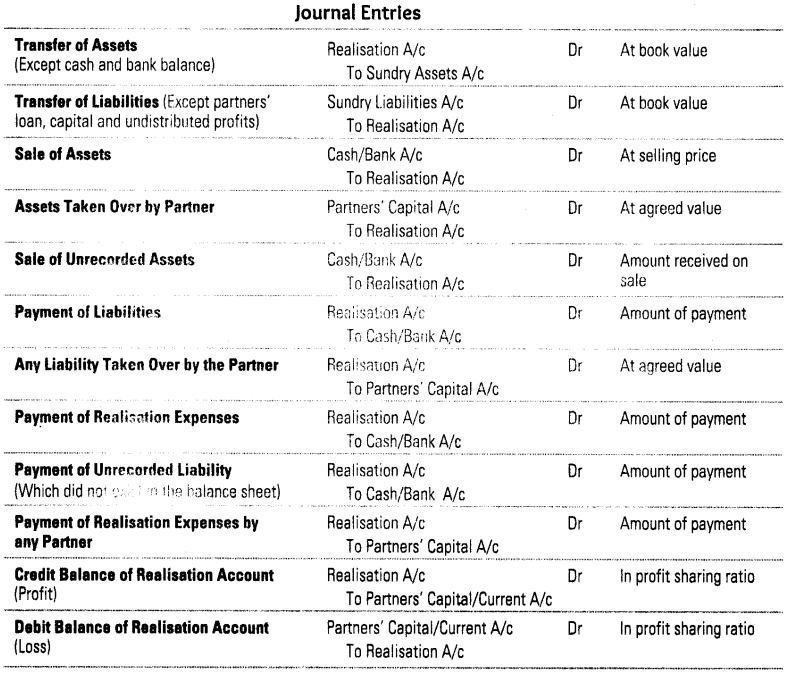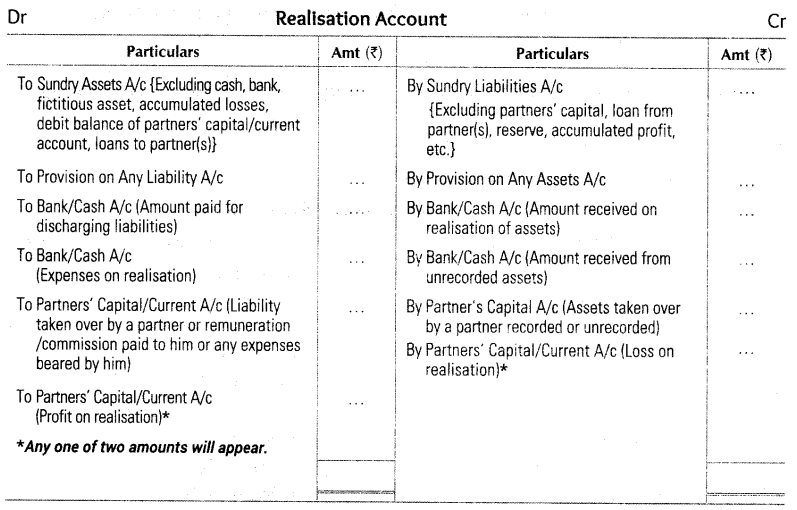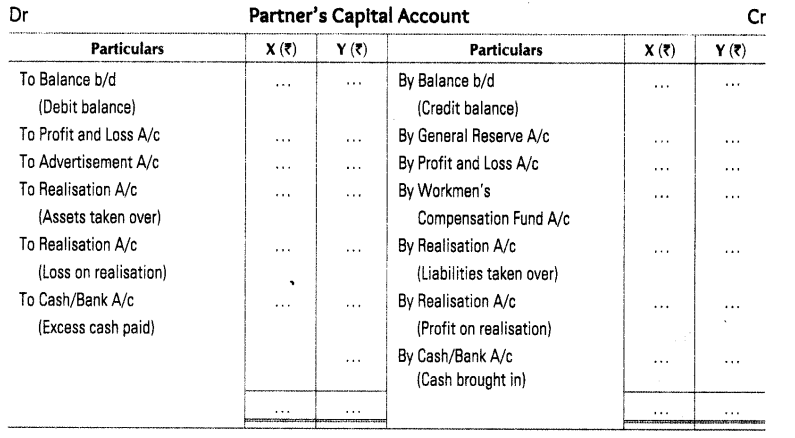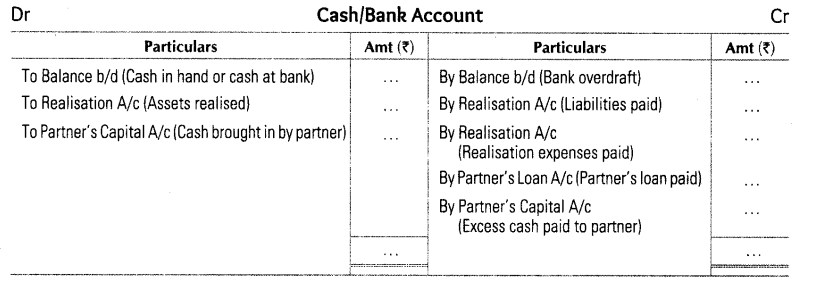Dissolution of Partnership Firm
Notes For All Chapters Accountancy Class 12
1. Dissolution Dissolution means discontinuance of existing relationship among the partners. According to Indian Partnership Act, 1932, dissolution may be either of partnership or of a firm.
2. Dissolution of Partnership It changes the existing relationship between partners but the firm may continue its business as before.
3. Dissolution of Partnership Firm Dissolution of firm means dissolution of partnership among all the partners in the firm. In this case, business of the firm also comes to an end.
4. Modes of Dissolution of Partnership Firm
(i) Dissolution by mutual agreement (ii) Compulsory dissolution
(iii) Dissolution on the happening of an event (iv) Dissolution by notice
(v) Dissolution by court
5. Settlement of Accounts in Case of Dissolution of Firm
(i) Treatment of Losses
Losses shall be paid, first out of profits, then out of partner’s capital and lastly, by the partners individually in their profit sharing ratio, if necessary.
(ii) Application of Assets
(a) Payment to outsiders/creditors
(b) Loans and advances of partners
(c) Payment of capital of partners
(d) The balance shall be divided among the partners in their profit sharing ratio
6. Treatment of Firms Debt and Private Debts
Where both the debts of the firm and private debts of a partner co-exist.
The following rules, as stated in Section 49 of the Act, shall apply
(i) Firm’s property is applied first in payment of firm’s debts and if there is any surplus, then the share of each partner is applied in the payment of his private debts or paid to him.
(ii) Partner’s private property is applied first in payment of his private debts and the surplus (if any) in payment of firm’s debts if the firms liabilities exceed the firm’s assets.
7. Accounting Treatment on Dissolution of Firm
On dissolution, the books of the firm are closed. The process is completed by opening the following accounts:
(i) Realisation account (ii) Partners’ capital account
(iii) Partners’ loan account (iv) Cash/bank account
(i) Realisation Account
It is a nominal account prepared at the time of dissolution of partnership firm to show profit or loss on realisation of assets and payment of liabilities.
NOTE: (i) Goodwill appearing in the balance sheet is treated as any other asset. In case, question is silent about the realisation of goodwill, it is assumed the goodwill does not have any value and no amount is realised for it.
(ii) When an asset is transferred to realisation account, its corresponding reserve or provision appearing on the liabilities side of balance sheet is also transferred to realisation account.
(iii) In the absence of any information regarding realisation of assets (tangible or intangible) and settlement of any outside liabilities, it should be assumed that no amount has been realised from such assets and an amount equal to the book value of such liability has been paid off.
Format of Realisation Account
NOTE: All provisions created against any asset or liabilities/provision for doubtful debts, provision for depreciation should be transferred to realisation account on credit or debit side as the case may be and it should be noted that those assets or liabilities should appear in realisation account at gross value.
(ii) Partners’ Capital Account
Balance of partner’s capital and current account are recorded in this account. Any asset of the firm taken over by the partner is recorded on the debit side and liability taken over is recorded on the credit side. Undistributed profits and reserves are recorded on the credit side and undistributed losses or fictitious assets are recorded on the debit side. When capital accounts are maintained following fixed capital account method, partners have current accounts also. These current accounts may have credit or debit balance. Current accounts are closed by transferring them to concerned partner’s fixed capital accounts.
The entries are as follows
(a) In case of debit balance in a current accounts of a partner
Concerned Partners’ Capital A/c Dr
To Concerned Partners’ Current A/c
(b) In case of credit balance in a current account of a partner
Concerned Partners’ Current A/c Dr
To Concerned Partners’ Capital A/c
The balance of partner’s capital account are closed in the following manner
(a) For making final payment to a partner (In case of credit balance)
Partner’s Capital A/c Dr
To Cash/Bank A/c
(b) When a partner is required to bring in cash (In case of a debit balance)
Cash/Bank A/c Dr
To Partner’s Capital A/c
Format of Partner’s Capital Account
(iii) Partner’s Loan Account
Partner’s loan will be paid after all outside liabilities are paid Partner’s Loan A/c Dr
To Cash/Bank A/c
(iv) Bank or Cash Account
It is a real account. On debit side, opening balance, amount realised through sale of assets and any amount paid in by the partners are shown. On the credit side, all the payments for liabilities, realisation expenses and final settlement made to partners are shown. In case both cash and bank balances appear in balance sheet, it is always better to open a single account. It is a self-balancing account.
Format of Cash/Bank Account
8. Preparation of Memorandum Balance Sheet for Ascertaining Sundry Assets
Memorandum balance sheet is prepared for calculating the missing figures of sundry assets. Sometimes, the total value of sundry assets is not given. However, the value realised from the assets is given, also the partners capitals and other liabilities are also given. In that case, sundry assets have to be ascertained by preparing the old balance sheet. The amount of capitals and other liabilities are added. The sum total is the total amount of assets.





Leave a Reply